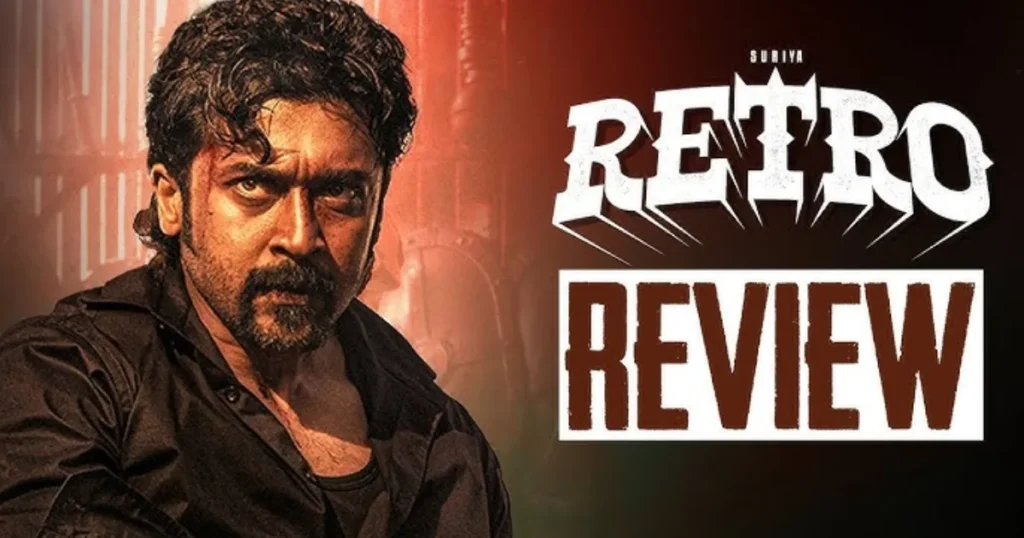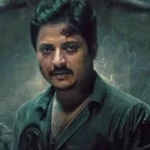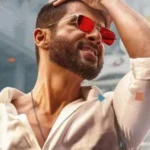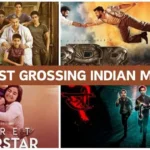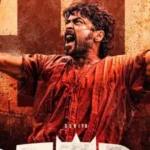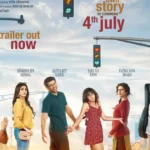Back to the Future is more than just a retro movie review; it’s a cultural phenomenon that defined a generation and continues to captivate audiences today. Released in 1985, this sci-fi adventure comedy directed by Robert Zemeckis and produced by Steven Spielberg blends nostalgia, heart, and innovation into a thrilling ride through time. For retro movie fans, cinephiles, and anyone craving a dose of 80s charm, this film remains a benchmark for storytelling and filmmaking craft. In this in-depth review, we’ll explore why Back to the Future endures as a beloved classic, breaking down its plot, performances, technical achievements, and lasting impact—all while keeping it spoiler-free for newcomers. Buckle up, because we’re hitting 88 miles per hour to revisit this gem!
retro movie review details table
|
Aspect |
Details |
|---|---|
|
Title |
Back to the Future |
|
Release Date |
July 3, 1985 |
|
Director |
Robert Zemeckis |
|
Screenwriters |
Robert Zemeckis, Bob Gale |
|
Cast |
Michael J. Fox, Christopher Lloyd, Lea Thompson, Crispin Glover, Thomas F. Wilson |
|
Genre |
Sci-Fi, Adventure, Comedy |
|
Runtime |
116 minutes |
|
MPAA Rating |
PG |
|
Budget |
$19 million |
|
Box Office |
$381.1 million (worldwide) |
|
Rotten Tomatoes |
93% (Critics), 94% (Audience) |
|
IMDb Rating |
8.5/10 |
Spoiler-Free Plot Summary
Back to the Future follows Marty McFly, a spirited teenager with a knack for skateboarding and rock music, who accidentally embarks on a wild adventure through time. Living in the small town of Hill Valley, California, Marty’s life is ordinary—until his eccentric scientist friend, Doc Brown, unveils a groundbreaking invention: a time-traveling DeLorean car powered by a flux capacitor. When an unexpected event sends Marty hurtling back to 1955, he finds himself navigating a world of sock hops, classic cars, and his own teenage parents. To get back to 1985, Marty must team up with a younger Doc Brown while avoiding disruptions to the timeline that could alter his future. The story weaves humor, heart, and high-stakes tension as Marty races against the clock to set things right, all while uncovering surprises about his family and himself.
The plot is a masterclass in balancing genres—sci-fi for the time-travel mechanics, comedy for the fish-out-of-water antics, and drama for the emotional stakes. It’s accessible for all ages, with enough wit to keep adults chuckling and enough adventure to thrill younger viewers. The narrative’s pacing keeps you hooked, with each scene building toward a climactic resolution that feels both earned and exhilarating.
Cast and Performances
The ensemble cast of Back to the Future is a key reason for its enduring appeal, with each actor delivering iconic performances that resonate decades later.
-
Michael J. Fox as Marty McFly: Fox is the heart and soul of the film, bringing infectious energy and charm to Marty. His quick wit and everyman relatability make him the perfect protagonist, navigating the chaos of time travel with a mix of panic and resourcefulness. Fox’s comedic timing, especially in scenes where Marty reacts to the quirks of 1955, is flawless, and his emotional moments ground the film’s more fantastical elements.
-
Christopher Lloyd as Dr. Emmett “Doc” Brown: Lloyd’s portrayal of the wild-haired, eccentric inventor is nothing short of legendary. His manic energy and wide-eyed enthusiasm make Doc both hilarious and endearing. Lloyd strikes a balance between mad scientist and loyal friend, giving the character depth beyond the caricature. His chemistry with Fox is electric, anchoring the film’s core relationship.
-
Lea Thompson as Lorraine Baines: Thompson shines as Marty’s teenage mother, delivering a performance that’s both playful and poignant. She captures the innocence and spark of a 1950s teen while hinting at the complexities of her character’s future. Her scenes with Fox are handled with care, avoiding awkwardness while leaning into the story’s unique premise.
-
Crispin Glover as George McFly: Glover’s quirky, vulnerable take on Marty’s father is unforgettable. He brings a nervous energy to George, making his transformation throughout the film both believable and satisfying. Glover’s offbeat delivery and physicality add a layer of authenticity to the character’s arc.
-
Thomas F. Wilson as Biff Tannen: Wilson’s portrayal of the bullying Biff is pitch-perfect, creating a villain who’s equal parts menacing and comically over-the-top. His performance ensures Biff is a memorable antagonist without overshadowing the leads.
The supporting cast, including James Tolkan as the stern Mr. Strickland, adds flavor to the Hill Valley universe, with each actor fully committing to the film’s blend of humor and heart. The chemistry among the cast feels effortless, making every interaction—from heartfelt talks to slapstick gags—pop off the screen.
Direction by Robert Zemeckis
Robert Zemeckis directs Back to the Future with a confident hand, blending technical precision with a playful spirit. Known for his ability to craft accessible yet ambitious films, Zemeckis ensures every frame serves the story. His direction keeps the tone light but never sacrifices the emotional weight of Marty’s journey. He masterfully juggles multiple timelines, using visual cues and clever editing to make the time-travel mechanics clear without bogging down the narrative. Zemeckis also infuses the film with a distinct 80s sensibility while capturing the nostalgic charm of the 1950s, creating a contrast that feels vibrant and immersive.
His ability to balance genres is a standout. The sci-fi elements are grounded enough to feel plausible, the comedy is sharp without being overbearing, and the dramatic moments hit hard without veering into melodrama. Zemeckis’ collaboration with Spielberg as executive producer likely amplified the film’s polish, but his unique vision shines through, making Back to the Future a masterclass in blockbuster filmmaking.
Screenplay by Zemeckis and Gale
The screenplay, penned by Zemeckis and Bob Gale, is a triumph of structure and wit. It’s a tightly woven script that seamlessly integrates time-travel complexities with character-driven storytelling. The dialogue is quotable, with lines like “Great Scott!” and “This is heavy!” becoming cultural touchstones. The writers cleverly use the time-travel premise to explore themes of family, destiny, and personal growth, all while keeping the tone accessible and fun.
The script’s strength lies in its ability to plant subtle foreshadowing and payoffs that reward repeat viewings. Every plot point feels purposeful, from Marty’s interactions with his family to the smallest details about Hill Valley’s history. The pacing is relentless, with no wasted scenes, and the humor lands consistently, whether through Marty’s culture-shock gags or Doc’s eccentric outbursts. The screenplay also handles the time-travel paradox with enough logic to satisfy sci-fi fans without alienating casual viewers.
Cinematography by Dean Cundey
Dean Cundey’s cinematography is a visual feast that enhances the film’s energy and tone. The vibrant color palette captures the contrast between the neon-soaked 1980s and the warm, nostalgic 1950s. Cundey’s use of dynamic camera movements—like sweeping shots of the DeLorean speeding through Hill Valley—adds a sense of urgency and excitement. Close-ups on Fox and Lloyd amplify their emotional beats, while wide shots of the town square ground the story in a tangible, lived-in world.
The lighting is particularly noteworthy, with the 1950s scenes bathed in a golden glow that evokes nostalgia, while the 1985 scenes use harsher, more modern lighting to reflect Marty’s reality. Cundey’s framing of key moments, like the clock tower sequence, builds tension and iconic imagery that’s instantly recognizable. His work ensures the film feels both intimate and epic, a balance that elevates the storytelling.
Music by Alan Silvestri
Alan Silvestri’s score is a character in itself, infusing Back to the Future with a sense of adventure and wonder. The iconic main theme, with its soaring brass and pulsating rhythm, perfectly captures the film’s blend of excitement and heart. Silvestri’s music amplifies every emotional beat, from the triumphant swells during action scenes to the tender strings in quieter moments. The score’s versatility allows it to shift seamlessly between comedy, drama, and sci-fi, making it one of the most memorable soundtracks of the 80s.
The film also features a killer soundtrack, with Huey Lewis and the News’ “The Power of Love” and “Back in Time” setting the tone for Marty’s rock-and-roll spirit. The inclusion of 1950s hits like “Earth Angel” and “Johnny B. Goode” adds authenticity to the era while serving the plot in clever ways. Silvestri’s score and the curated songs work in harmony to create a soundscape that’s as nostalgic as it is timeless.
Visual Effects (VFX)
For a film made in 1985, Back to the Future boasts impressive visual effects that hold up remarkably well. The DeLorean’s time-travel sequences, complete with fiery tire trails and glowing flux capacitor, are iconic and executed with practical effects that feel tangible. Industrial Light & Magic (ILM), under Spielberg’s influence, delivered seamless VFX that blend into the story without overwhelming it. The lightning effects, time jumps, and subtle aging makeup on the actors are all crafted with care, ensuring the sci-fi elements enhance rather than distract from the narrative.
While modern audiences might notice the limitations of 80s technology, the VFX never feel dated because they’re used sparingly and purposefully. The focus on practical effects, like the DeLorean’s mechanical gizmos, gives the film a grounded quality that CGI-heavy modern blockbusters sometimes lack. The simplicity and creativity of the VFX make them a strength rather than a gimmick.
Strengths of Back to the Future
-
Engaging Story: The screenplay’s tight structure and clever use of time-travel mechanics keep viewers hooked from start to finish.
-
Iconic Performances: Fox and Lloyd’s chemistry, along with the stellar supporting cast, creates memorable characters that resonate across generations.
-
Timeless Appeal: The blend of 80s and 50s aesthetics, paired with universal themes of family and destiny, makes the film accessible to all ages.
-
Technical Craft: From Cundey’s cinematography to Silvestri’s score, every technical element is executed with precision and heart.
-
Cultural Impact: The film’s quotable lines, iconic imagery (hello, DeLorean!), and universal appeal have cemented its place in pop culture.
Weaknesses of Back to the Future
-
Pacing in Act Two: While the film’s pacing is generally brisk, some moments in the 1955 segment can feel slightly drawn out, particularly for viewers accustomed to modern blockbusters’ relentless speed.
-
Simplified Time-Travel Logic: The film glosses over some time-travel paradoxes, which might bother hardcore sci-fi fans who crave more complex explanations.
-
Limited Diversity: Reflecting its 1980s origins, the film’s cast and setting are predominantly white, which may feel dated to contemporary audiences seeking inclusivity.
These weaknesses are minor in the grand scheme, as the film’s charm and execution overshadow any flaws. They’re more nitpicks than dealbreakers, especially for a retro classic.
Audience and Critics’ Reactions
Back to the Future was a massive hit upon release, earning widespread praise from critics and audiences alike. Critics lauded its inventive storytelling, vibrant performances, and seamless blend of genres. Roger Ebert called it “an exercise in nonstop invention,” praising its energy and heart. The film holds a 93% critics’ score and a 94% audience score on Rotten Tomatoes, reflecting its universal appeal.
Audiences embraced the film’s humor, adventure, and relatable characters, turning it into a cultural juggernaut. Fans on platforms like Letterboxd continue to rave about its rewatchability, with many citing the DeLorean and Doc’s eccentricities as highlights. Some modern viewers note the film’s dated elements, like its lack of diversity, but most agree its charm transcends time. Social media buzz on X highlights ongoing love for the film, with fans sharing memes of Marty’s skateboard chases and Doc’s “1.21 gigawatts!” line.
Box Office Buzz and Comparisons
With a modest $19 million budget, Back to the Future grossed $381.1 million worldwide, making it the highest-grossing film of 1985. Its success spawned two sequels, an animated series, and a theme park ride, cementing its franchise status. Compared to other 80s classics like E.T. ($435 million) or Ghostbusters ($295 million), Back to the Future held its own, proving audiences craved original, high-concept stories.
Unlike modern blockbusters reliant on CGI spectacle, Back to the Future succeeded through storytelling and character-driven humor. It shares DNA with films like The Goonies (1985) for its adventurous spirit and Ferris Bueller’s Day Off (1986) for its youthful energy, but its time-travel hook sets it apart. Today, it remains a gold standard for sci-fi comedies, influencing films like Bill & Ted’s Excellent Adventure and Looper.
Final Verdict and Star Rating
Back to the Future is a cinematic triumph that blends heart, humor, and innovation into a timeless adventure. Its stellar cast, sharp screenplay, and technical brilliance make it a must-watch for retro movie fans and newcomers alike. While minor pacing hiccups and simplified sci-fi logic exist, they’re dwarfed by the film’s infectious energy and cultural staying power. Whether you’re a cinephile dissecting its craft or a casual viewer craving fun, this film delivers. It’s not just a retro movie review—it’s a time machine to joy.

